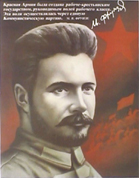
An Introduction to Soviet Aircraft, 1917-25

An Introduction to Soviet Aircraft, 1917-25
Along with its cousin, the Nieuport 24, the N.17 was another French design utilized by the early Soviet aviation services. Most of these machines in Russian service appear to have been imported from France. Many exhibited the French tricolour rudder when they arrived, and full French aero factory stencilling.
It is possible the very limited numbers of the N.17 were manufactured at the Duks factory during 1917. Noting that mass manufacture of the N.24 started immediately in April 1917, this would suggest that perhaps some other Nieuport design was presently in production to facilitate such. Investigation on this matter will have to continue. In any case, many N.17s appear to have been unarmed after the withdrawal of the RSFSR from the War, suggesting that they had assumed a training role with the availability of the N.24 model.
The following are some delightful examples from early Soviet service. The photographs depicting all of these aircraft can be located in Geust and Petrov's superb volume Red Stars 3, pp. 33, 48-49.
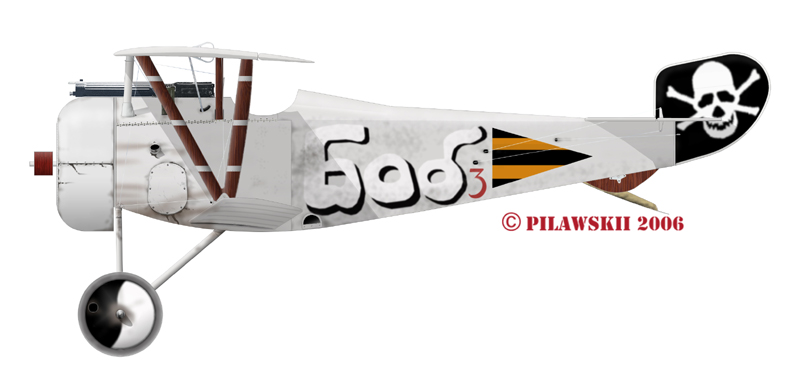
This Nieuport 17 (s/n 233598) was piloted by Boris Guber of the 19
KAO, April 1917. The location is given as Galicia. The aircraft's basic
finish, as with all of the N.17s in this article, was the ubiquitous French
dull aluminium dope of the period.
Apparently, Guber's nickname was "Bob", which is the large inscription to port. A small red "3" follows this, causing one to wonder if this was the third 'Bob' machine? The pennant colours are described in the caption as being orange and black, representing those of the Order of St. George. The rudder shows a delightful skull-and-crossbones marking, but on this orthochromatic film stock it is impossible to say if the background colour was red or black (or indeed, other possibilities), which draws and interesting comparison to some of the N.24s in an earlier part of this article.
"Bob3" was quite worn in appearance, suggesting an active service life.
The gun is not very well in view, but seems to have been a fixed Vickers.
A large amount of oil staining can be seen on the fuselage fabric. No national
insignia can be seen on the upper wing's upper surfaces, and so none have
been drawn on the lower surfaces in this profile.
. . . . .
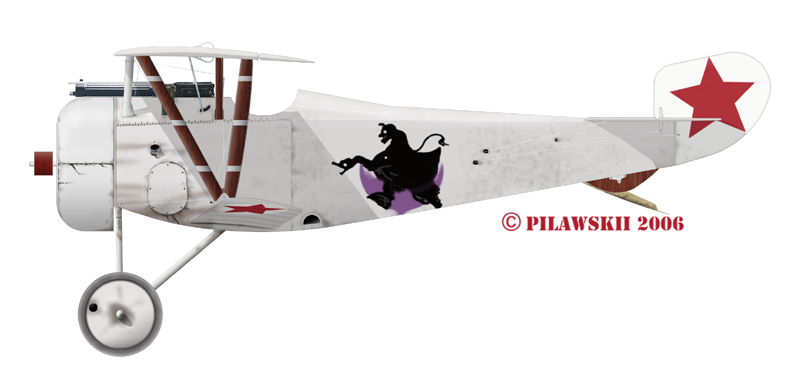
A number of N.17s were photographed during 1920 without any unit identification which exhibit very similar markings and artwork themes to Gvajt's example, causing one to wonder if they were part of the same unit? I this case, some restoration of the appearance was undertaken based upon the details of those examples, as this machine is not fully in view.
Gvajt's Nieuport carried a lovely 'Devil riding a goose' emblem. This artwork appeared over some colouration with a curious appearance on orthochromatic film, and the hue above is an educated guess. Most of the "devil" or "witch" theme aircraft featured national insignia in eight positions (top wing upper and lower surfaces, lower wing lower surfaces, and rudder) consisting of a bloated early type star on a white disc. Curiously, these were applied upside-down on the wing surfaces.
Gvajt's N.17 was armed with a single Vickers. The fuselage was again heavily stained, showing its service use.
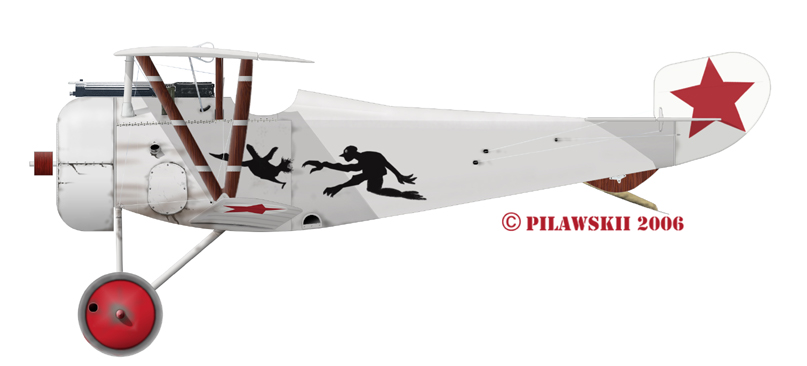
Another 'devil-and-goose' theme N.17, in this case with the "monster"
(devil, ogre, or?..) chasing a fleeing water fowl. No pilot nor unit attribution
is given in the photo caption.
The wheels on this aircraft have a very dark appearance, here interpreted as red colour. National insignia were seen in eight positions (top wing upper and lower surfaces, lower wing lower surfaces, and rudder) consisting of a bloated early type star on a white disc, and again these were applied upside-down on the wing surfaces.
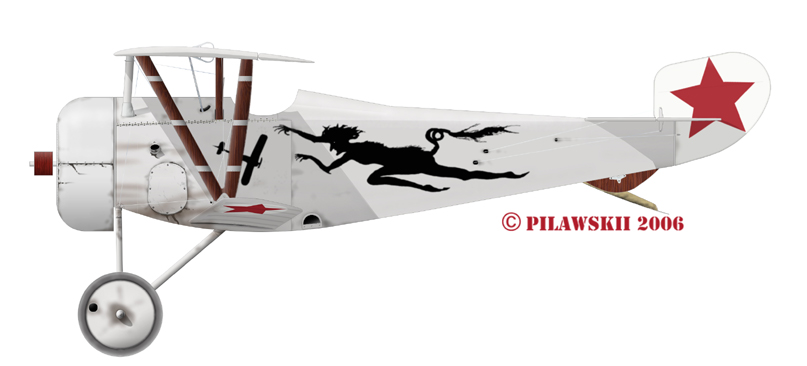
Another similar Nieuport 17 in this case with a 'witch chasing an aircraft'
artwork on the fuselage. The photograph is a close-up view, and again the
other details are a reconstruction.
This machine does not appear to have been quite so filthy, and also seems to be lacking any armament. One wonders if this suggests a training role for this N.17?
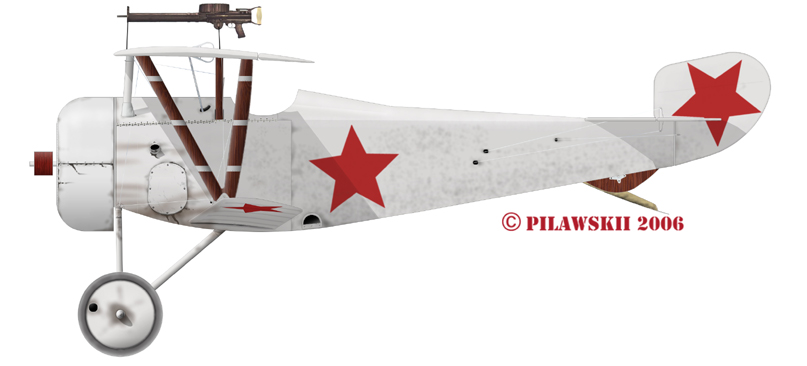
This Nieuport 17 is shown second from left in the bottom photograph
on page 49. It appears to have been armed with a Lewis Mk.2 on a rather
modest looking steel tube mount.
The aircraft was fascinating by way of its interesting national markings
which seem to point to later more standardized practices. Bloated national
star insignia were applied at least to the wing upper surfaces, upper horizontal
stabilizer, fuselage and rudder, and have been assumed here on the wing
lowers. The marking on the rudder is again upside-down, which seems strange
as the other insignia are not. Indeed, if this machine also carried such
stars on the upper wing lower surfaces, as was common, it would have meant
insignia in twelve places! Perhaps the pilot was unusually concerned
with misidentification?